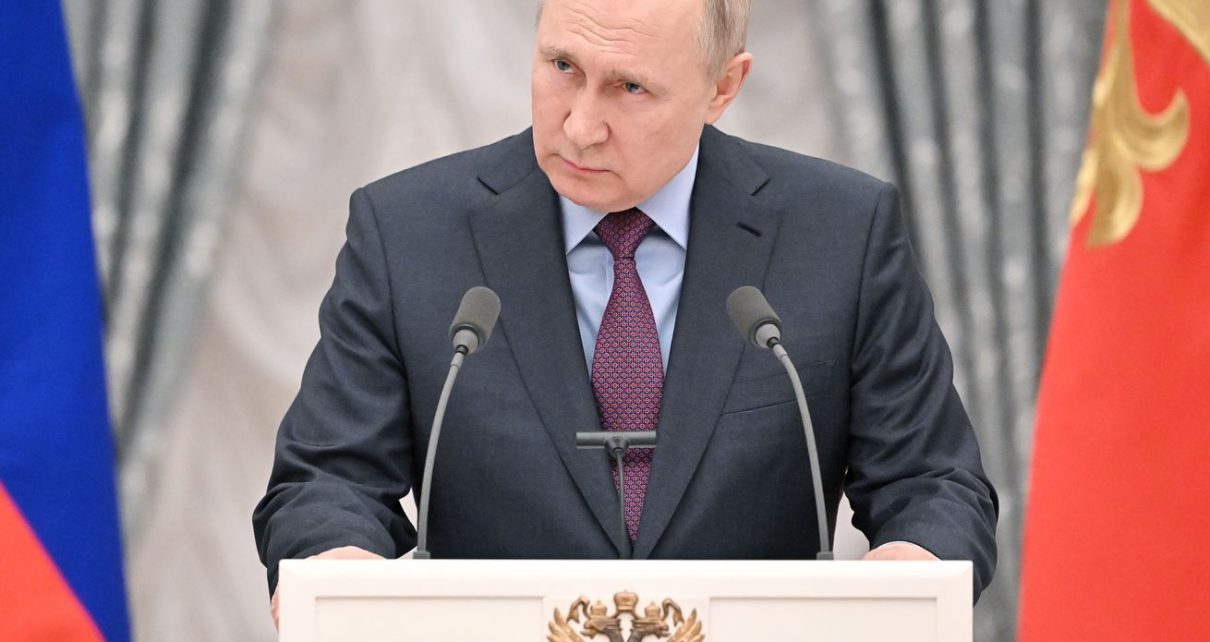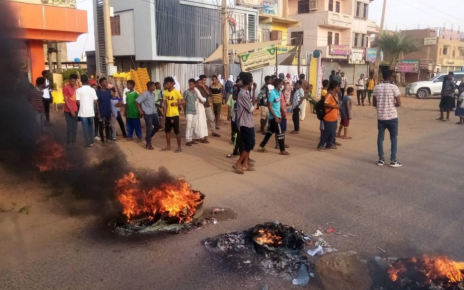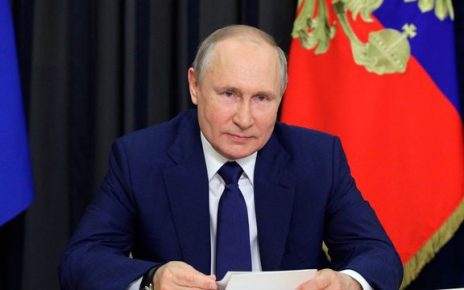
Putin declared a “special military operation” in Ukraine, and Kyiv has confirmed the start of hostilities in a devastating new chapter for Europe.
Russia’s long-looming invasion of Ukraine has officially begun.
Russian President Vladimir Putin announced Thursday morning local time that he is launching a “special military operation” in Ukraine, a move that was followed up by reports of explosions around cities, including Kharkiv in eastern Ukraine, and the capital, Kyiv.
The Ukrainian foreign minister also confirmed that “Putin has just launched a full-scale invasion of Ukraine. Peaceful Ukrainian cities are under strike.”
Putin’s attempt to redraw the map of Europe could lead to the most devastating conflict on the continent since World War II. It could cost thousands of civilian lives and create hundreds of thousands of refugees fleeing the violence in Ukraine.
Putin’s declaration came while the United Nations Security Council held a special session in New York on the Ukraine crisis, and bombing began shortly thereafter, according to multiple news reports. In his address, Putin claimed “to defend people who for eight years are suffering persecution and genocide by the Kyiv regime,” a reference to a false claim about the government in Ukraine. Putin claimed that the Russian military seeks “demilitarization and denazification” but not occupation. He demanded Ukraine lay down its weapons or be “responsible for bloodshed.”
Exactly what’s happening on the ground in Ukraine is hard to know. Russia has already used misinformation tactics and will likely jam up local communications. But it’s hard to interpret what Putin said as anything other than a declaration of war.
The tension over Ukraine has been building for months, but escalated quickly this week, when, on Monday, Putin delivered an hour-long and combative speech that essentially denied Ukrainian statehood. He recognized the independence of two breakaway regions in eastern Ukraine where Moscow has backed separatists since 2014, and sent so-called peacekeeping forces into the region. As experts said, this was likely the beginning, not the end, setting the stage for a much larger conflict.
Putin’s escalation comes after the United States warned, again and again, that a larger invasion by Putin was imminent, and after the US and its European allies imposed significant — but far from all-encompassing — sanctions on Moscow.
“President Putin has chosen a premeditated war that will bring a catastrophic loss of life and human suffering,” President Joe Biden said in a statement following Putin’s announcement. “Russia alone is responsible for the death and destruction this attack will bring, and the United States and its Allies and partners will respond in a united and decisive way. The world will hold Russia accountable.”
But Ukraine — and the world — is right now in a perilous and unpredictable moment. Hours before Putin’s announcement, Ukrainian President Volodymyr Zelensky delivered an impassioned speech against war, one directed to a Russian audience, as a final plea: “War takes away guarantees for everyone,” he said. “No one will have any kind of guarantees of security. And who will suffer from that the most? People.”
How the world got here
Over the last few months, Putin had amassed close to 190,000 troops near the Ukrainian border, a force that military analysts said was clearly prepared and ready to launch an invasion.
Ukraine is also a larger stage for Russia to try to reassert its influence in Europe and the world, and for Putin to cement his legacy, and reclaim a semblance of the Russian empire that was lost after the fall of the Soviet Union following the end of the Cold War.
Last year, Russia presented the US with a list of demands, some of which were nonstarters for the United States and its allies in the North Atlantic Treaty Organization (NATO). Putin demanded that NATO stop its eastward expansion and deny membership to Ukraine, and also made other demands for “security guarantees” around NATO.
Ukraine is the fourth-largest recipient of military funding from the US, and the intelligence cooperation between the two countries has deepened in response to threats from Russia. But Ukraine’s NATO membership is not at all an imminent possibility. Still, Moscow’s demand was largely seen as a non-starter by the West, as NATO’s open-door policy says sovereign countries can choose their own security alliances.
Though Putin has continued to tout the threat of NATO, his speech on Monday revealed that this is much more than that. He does not see the government in Ukraine as legitimate: “Ukraine actually never had stable traditions of real statehood,” Putin said.
As experts noted, it is difficult to square that speech with any sort of realistic diplomatic outcome to seriously avert conflict — for Putin, regime change in Ukraine appeared to be the underlying goal.
Putin’s speech Monday was essentially a confession that this wasn’t really about NATO, said Dan Baer, the acting director of the Europe Program at the Carnegie Endowment for International Peace and a former ambassador to the Organization for Security and Cooperation in Europe. “It was about that he doesn’t think Ukraine has a right to exist as a free country,” he said before Putin’s escalation Wednesday night.
What we know so far
Whatever Putin has unleashed is still unfolding. The Ukrainian interior minister has told CNN that the “invasion has begun.” There are reports of explosions around major cities, something Ukraine’s foreign minister confirmed.
Reuters also reported Russian troops landing in two Ukrainian cities, Mariupol and Odessa, and a Ukrainian official confirmed to MSNBC that troops were in at least one of them.
Putin has just launched a full-scale invasion of Ukraine. Peaceful Ukrainian cities are under strikes. This is a war of aggression. Ukraine will defend itself and will win. The world can and must stop Putin. The time to act is now.
— Dmytro Kuleba (@DmytroKuleba) February 24, 2022
But the start of wars are messy and chaotic and confusing, often deliberately so, and so there is not a lot that we know right now, and we may not know for some time.
The United States has said it will not involve troops in any Ukrainian conflict, though the US has added troops to NATO’s eastern flank. That leaves sanctions as the main tool against Russia, and the US and its European allies are likely to place another round of much tougher sanctions on Russia following a first round of penalties that did little to deter Moscow.
Zelensky convened a Ukraine security council meeting in the early hours of Thursday to impose martial law, according to news reports.
What this all means for Ukraine, for Europe, for all the world is still really unclear. The Biden administration has warned that a war in Ukraine could kill as many as 50,000 civilians, and spark a refugee crisis that forces between one and five million to flee. This comes with a cost for Russia too, as it could face thousands of casualties. A pathway to out of this crisis does not appear to exist right now, and to get there may mean incalculable and unpredictable costs for Ukraine, and for Russia.





